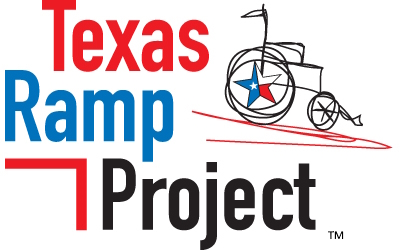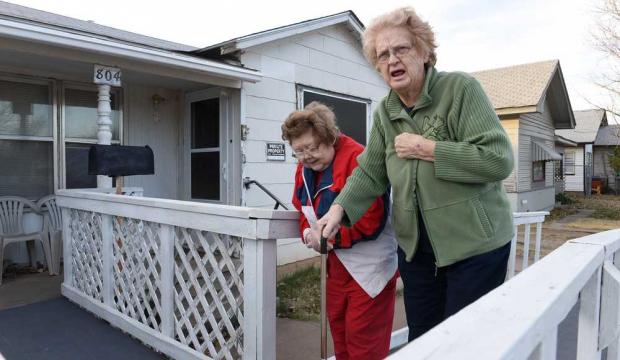[column width=”3/4″ title=”” title_type=”single” animation=”none” implicit=”true”]
Amarillo Globe-News
Texas Ramp Project helps disabled in and out of homes.
Sometimes all anyone needs is a little hand. Or a good handrail. On a ramp.
Geraldine Greene was searching the Internet for help when she found the Texas Ramp Project.
Green has been taking care of her 53-year-old brother Kirby McQueen since February 2016, after a car accident left him paralyzed four years ago.
“Texas Ramps is a life saver. They really brought life back into this household,” she said. “They gave my brother some of his independence back. It was a blessing, and they are truly angels from God.”
Before they had an access ramp to their home, it took a group effort to get McQueen in and out of the house.
“With the wheelchair he had, one person would have to get behind his chair and one in the front to lift him down the steps … it was always a two-person thing,” Green said.
The Panhandle division of the Texas Ramp Project serves all 26 counties and provides ramps free of charge to those in need.
But now, even they could use a hand.
“We built so many this year that we ran out of funds,” Greg Hinders said. He’s the director of the Panhandle Region of the Texas Ramp Project. “If we could get ten more this year, that would be great.”
The local group uses volunteer manpower and donated funds to build about 80 ramps a year for people in the community. Hinders said it takes four to five hours to complete each ramp and costs between $400-500 for an average build. He said the people they serve are typically referrals from “social agencies, hospitals, rehab centers, independent living, home health care and places like that. We helped one family where the wife had back problems but she still was helping her husband get in and out of the house, and she didn’t need to be doing that with her back problems.”
Kirby Hampton had a ramp built on October 20.
“It’s made a big difference in my life,” she said. “It was very, very hard to go up the steps to my house. It’s so much easier to get in and out than before because it took two people help me get up and down. Now they just roll the wheelchair down and I go on about my business.”
Hampered by infections in her feet, Hampton ultimately had to have toes amputated on both feet during separate surgeries. Prior to being referred to TRP, she went about six months needing daily assistance in and out of the house.
“If it wasn’t for them, a lot of people wouldn’t be able to go in and out of their house and do the things they want to do. I’m really thankful and they didn’t charge me a penny. Everyone who’s seen the ramp talks about how nice it is. It was a blessing for my family, because they were the ones who had to pick me up to get me where I’m going.”
Marlene Rasco, 76, said she went for a year needing a ramp, depending on a metal hand rail or family member to assist her up and down her porch’s three steps.
Although she is not in a wheelchair, Rasco has severe arthritis and a hip that makes it difficult to walk up and down steps. She is also the only caretaker for her 54-year-old daughter, who has Down syndrome.
“I didn’t know what I was going to do if I didn’t get that ramp, because my daughter needs me, Honey. I’m the only one that drives,” Raso said. “I’m so thankful.”
Hinders said that while some of Amarillo’s referral agencies have some funds to help pay for the ramps, a large portion of their money comes from donations. To donate go online to texasramps.org or visit their Facebook page at facebook.com/TRPAmarillo.
[/column]
[column width=”1/4″ last=”true” title=”” title_type=”single” animation=”none” implicit=”true”]
[/column]





